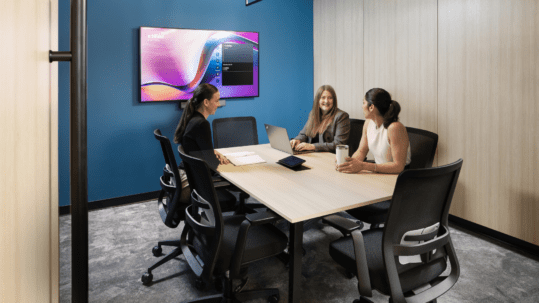A fundamental shift is underway. For decades, offices have been the undisputed default location for work. However, for the first time in recent history, the office is not the only place where work can be completed effectively and efficiently. Working from home during the lockdown has given businesses and employees a new outlook on the workplace. This new perspective has altered the fundamental nature of work, blurring the once distinct line between home, entertainment, and work. However, if work can be carried out from home, what compelling reason exists for employees to want to be in the workplace?
Smart businesses understand that because employees no longer need to come into the office to do their jobs, corporate offices must now be more than just a place to house employees; they must also be a destination. Read on to find out how to encourage employees to return to work and transform your office from a mundane workstation into a destination that employees are proud to call theirs.
What is a destination Office?
A destination office is an enticing environment where people are eager to be and work. It is more than just a workplace; it is a space that caters to a team’s physical, cultural, and social needs, resulting in a comfortable working environment that includes experiences that cannot be experienced at home. A destination office fosters meaningful connections, creative innovation, and unexpected ideas. All aspects of the workplace reflect the company’s core values, unique company culture, and brand identity which can be felt by employees. It is a place that most staff members will only visit 2-3 times per week, not because they are required to, but because the culture is there, the brand is there, and it is a place where they want to be.
4 Steps to make your office a destination
1. Dedicate space to collaboration
We recently worked with PayByPhone to transform their office space. PayByPhone, like many other companies, began to notice the disadvantages of a fully remote workforce, particularly in terms of collaboration. To counteract this, they decided to dedicate an entire floor to collaborative areas. This floor goes beyond an open floor plan and incorporates a variety of different spaces that promote interaction and cooperation. From ping-pong tables to lounge areas to meeting pods, there are plenty of places for workers to lay back and connect with coworkers in person. Moreover, this collaboration floor goes beyond a rigid, office-centric mentality to foster genuine connection and ingenuity.
2. Bring outside experiences to the office
Employees are now seeking conveniences that will make their commute to the office more enjoyable. Destination workplaces have grown in popularity because they combine first-class employee experiences while integrating outside experiences to create an office that employees want to visit regularly. Companies can accomplish this by incorporating experiential areas into the workplace. A gym suite, meditation room, childcare facility, office bar, or coffee shop are just a few examples of how businesses can provide purposeful and experiential spaces that encourage employees to come to work because they are not offered at home.
3. Create a collective experience
A well-crafted destination workplace should transform work into a seamless part of life and foster a vibrant sense of community. Although remote work offers advantages, it comes with a significant drawback—the absence of in-person interaction. This lack of face-to-face engagement negatively impacts knowledge transfer, team comradery, and the nurturing of company culture. Infrequent gatherings can create a sense of detachment among team members, leading to reduced employee engagement and productivity. A well-designed workplace can bridge this gap, providing a space where people can come together, collaborate, and thrive both personally and professionally.
To combat disengagement, companies can re-purpose their office to foster a strong company culture. Consider holding weekly staff functions or monthly in-person team bonding activities to encourage employees to come together. The office’s role has evolved; it is no longer limited to having employees sit at a desk for eight hours a day. It is about establishing a collaborative conceptual framework that encourages team members to connect, learn from one another, and benefit from the experience.
4. Understand your brand and culture
To understand what attracts people, it is necessary to first understand them. When it comes to workplace transformations, businesses require office solutions that fit their company culture, brand, and employee expectations. If most of your employees prefer quiet, focused work, placing arcade games near workstations will not encourage them to come in but to avoid the office and work independently at home. That is why it is critical to have a robust workplace strategy that is developed through interactions and dialogue with employees to determine how they work best, as well as their expectations and desires. Once you have established a well-thought-out workplace strategy, you can better equip the workplace to function as a destination where employees want to be.
Adapting to this new way of working
Companies can adapt to this new normal with the right workplace design strategy, embracing the changes enabled by personal technology, flexible working models, and employee preferences. Moreover, organizations that want to stay competitive and attract and retain top talent must provide compelling reasons for employees to choose the office over a coffee shop or their home. Contact Us to find out how we can help you transform your workspace to align with the company vision, create spaces that encourage employee engagement, and discover new ways to turn your workplace into a destination.






